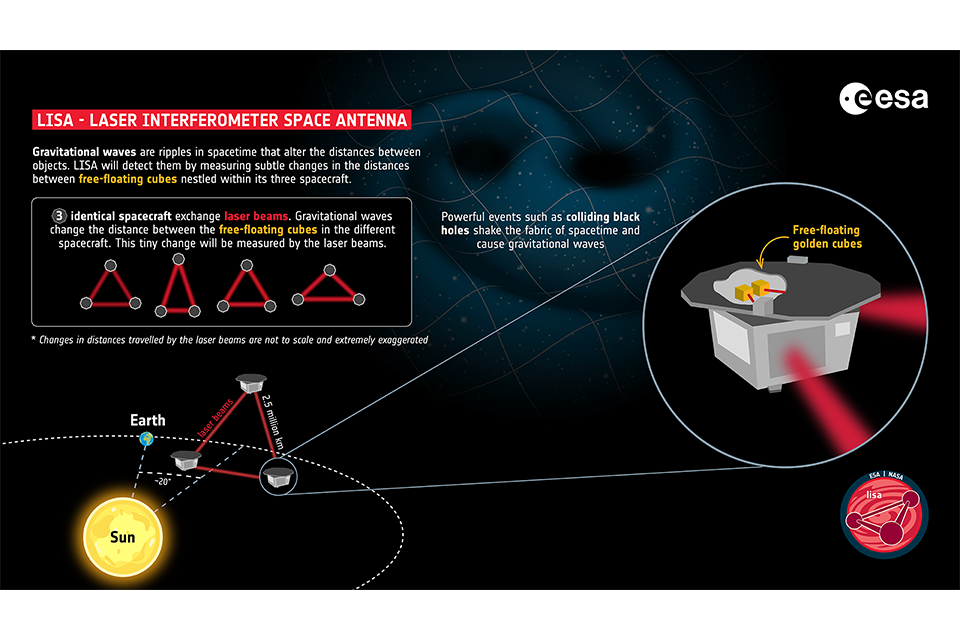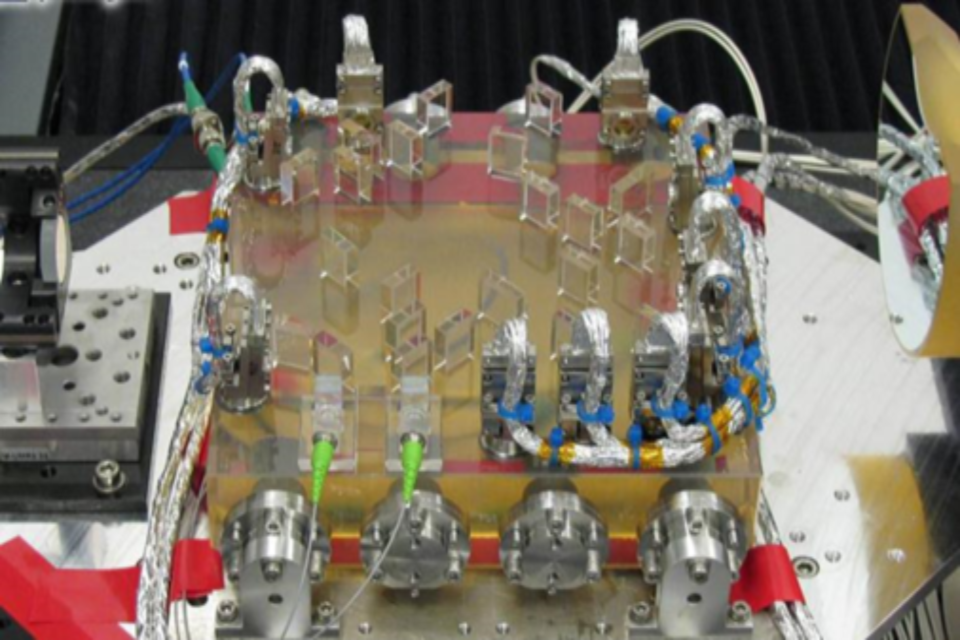LISA (Laser Interferometer Space Antenna)
LISA is an ESA large class science mission in development. Due for launch in the mid-2030s, LISA will be the first space-based gravitational wave observatory.

artist’s impression of the LISA concept showing three spacecraft in triangular formation [Credit: ESA]
Gravitational waves are miniscule ripples in space-time, thought to be triggered by massive events in space like exploding stars and the merging of black holes at the centre of galaxies.
Einstein predicted the existence of gravitational waves a century ago, but the first conclusive detection was not until 2015, from ground-based observatories.
This discovery offers scientists an exciting prospect - an entirely new way of observing the Universe, even for large scale events billions of light years away and objects that emit no light such as black holes.
However, ground-based observations are limited by background gravitational noise and by the curvature of the Earth, because measurements must be made over vast distances to detect these tiny perturbations. Ground-based observatories can only be used to detect the highest frequency gravitational waves, which means that the ability to observe cataclysmic events in space is still limited.
To capture the lower frequency waves and study them in more detail a space-based observatory is needed. This will require three spacecraft flying in a triangular formation with a laser metrology system linking them that is capable of measuring with unprecedented precision, to a few millionths of a millionth of a metre, over distances of 1.5 million kilometres.

Infographic demonstrating how LISA will measure gravitational waves. Credit: ESA / ATG Medialab
The infographic above shows how the LISA mission will measure gravitational waves using laser beams and free-floating cubes in its 3 spacecraft. The image shows the 3 LISA spacecraft in orbit with the Earth and Sun visible. Laser beams connect the spacecraft, creating a triangle formation. A zoomed in circle focuses on one of the spacecraft, illustrating the two golden cubes it contains. In the background an illustration of two colliding black holes is creating ripples in spacetime. Another box shows a sequence of triangles showing the formation of the 3 spacecraft being impacted by passing gravitational waves will have on the distance travelled by LISA’s laser beams. Gravitational waves change the distance between the cubes in each spacecraft. This tiny change is measured by the laser beams.
It also requires test masses to be housed inside the spacecraft in gravitational free fall, isolated entirely from all other gravitational effects from their surroundings (including those of the spacecraft itself). This means that any changes in distance between the test masses measured by the lasers can only be due to the passage of gravitational waves, causing the fabric of space and time to stretch and contract.
Because the technology requirements are so demanding, ESA launched Pathfinder to prove it could be done before embarking on the much larger LISA mission. Pathfinder was an outstanding success, exceeding all expectations and demonstrating conclusively that the measurement principles needed for LISA could be achieved.
How is the UK involved?
A team from Glasgow University developed the optical bench for Pathfinder, a core element of the laser metrology system, with funding from the UK Space Agency.
Building on this success, the Glasgow team is now working in partnership with UKRI-STFC’s Astronomy Technology Centre in Edinburgh to design the optical benches for LISA.
The UK Space Agency is also funding development of a LISA Data centre in the UK, with key contributions from Birmingham, Glasgow, Portsmouth and Southampton Universities, to ensure that UK scientists will be at the forefront of gravitational wave research when LISA is launched.

Pathfinder optical bench [Credit: ESA/ATG]
Updates to this page
-
Added information about UK involvement.
-
First published.